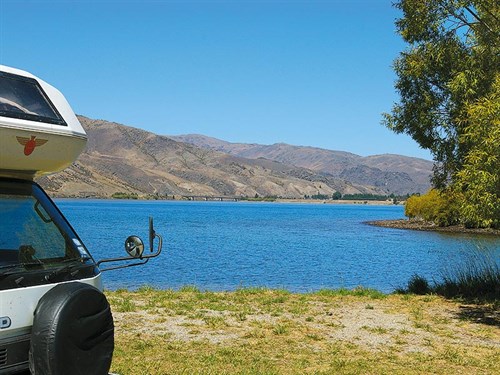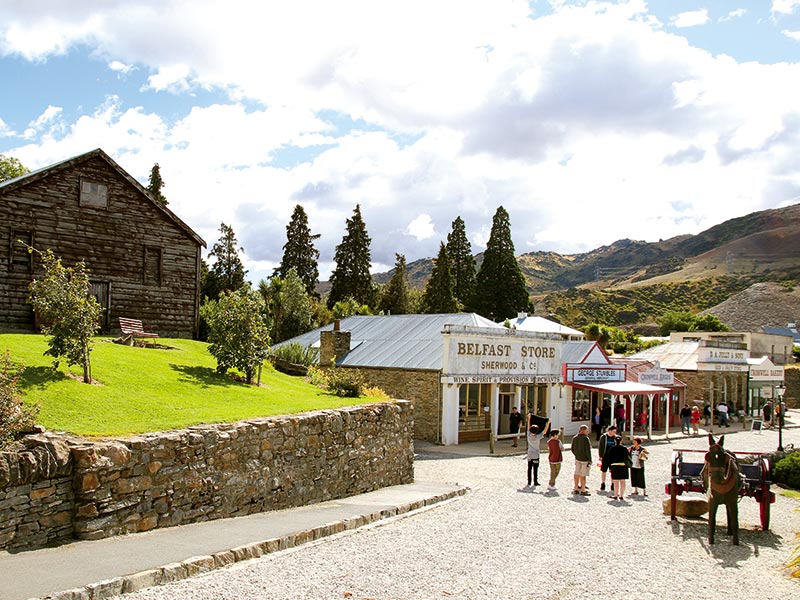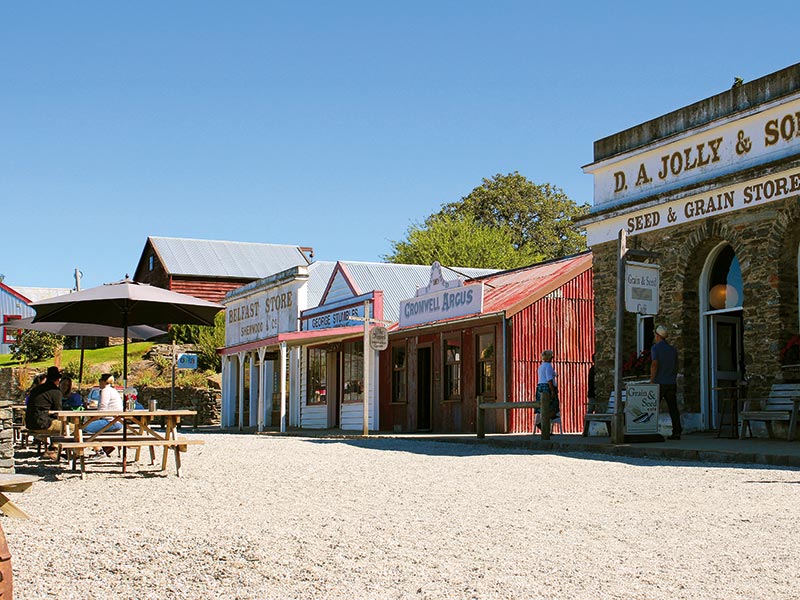Driving the last few kilometres towards Cromwell, we were on the final leg of a day's travel from Dunedin to Queenstown. It had been a long haul and – as it baked below us in the warm rays of a perfect late summer's day – Cromwell appealed as a good place to stop for a while and stretch our legs.
Lake Dunstan
If you were around in the early 1990s, you will no doubt know the story of New Zealand's last Think Big project, as the grand schemes of the Muldoon era were colloquially known. These interventionist strategies, which relied heavily on unprecedented overseas borrowing, were designed to stimulate the economy and therefore eventually reduce debt.
A number of white elephants remain as mute testimony to the questionable merit of these projects which stimulated the economy in the short term and opened the flood gates to overseas investment. They include the now defunct synthetic-petrol plant at Motunui, and expansions to the struggling Tiwai Point Aluminium Smelter.
A proposed aluminum plant at Aramoana was dangled as a golden carrot to justify such lavish expenditure as the Clyde Dam would require from a depressed economy. Economic concerns aside, worse were the pesky environmentalists, scientists, lawyers, and locals who threatened to spoil play.
But in 1982, despite widespread opposition to the project, construction commenced on the controversial project which would eventually create Lake Dunstan. The lake now covers a surface area of 26 square-kilometres. Below its deceptively serene surface lays old Cromwell.

Looking at the water that now lay over what was once a thriving town formed during the Otago Goldrush and maintained as a commercial hub by farmers and orchardists, I was overwhelmed with sadness. Nor was my mood lightened by the knowledge that projected costs for the construction of the Clyde Dam massively blew out to an eventual cost of somewhere between $1.4 and two billion when it was discovered that the dam was being built on a fault line.
Old Cromwell Town
Old Cromwell Town is the brilliant brainchild of a group of forward-thinking Cromwell locals who, in the mid-1980s, had the remarkable foresight to salvage some of the town's historical buildings and place them beyond the reach of the rising water.
This visionary project would see some of Cromwell's most attractive buildings recreated according to an authentic street plan so the visitor can amble around taking in not only a sense of the historic gold rush town's past, but also its future.
For this is not only a working recreation of an old town, it is also just the starting point for the ambitious multimillion-dollar project that will eventually include both commercial and residential buildings, reconstructed Chinese huts and gold diggings, and a rural setting complete with period fencing.
Central Otago Farmers' Market
The area is also home to the weekly Central Otago Farmers' Market, which runs every Sunday from November until February.
Cromwell is the home of stone-fruits, with cherries, apricots, peaches, nectarines and plums grown locally. Roadside stalls are abundant. On the outskirts of Cromwell we stopped at one selling cherries and apricots at their seasonal prime.
Perhaps it was the narcotic effects of the fruit nectar, though it might easily have been the perfect juxtaposition of golden hills above a dark blue lake. Whatever it was, I was seduced by Cromwell.
Staying in Cromwell
There are three motorcamps in Cromwell and options for freedom camping lakeside at Lowburn Harbour and three other designated sites near Lake Dunstan.









